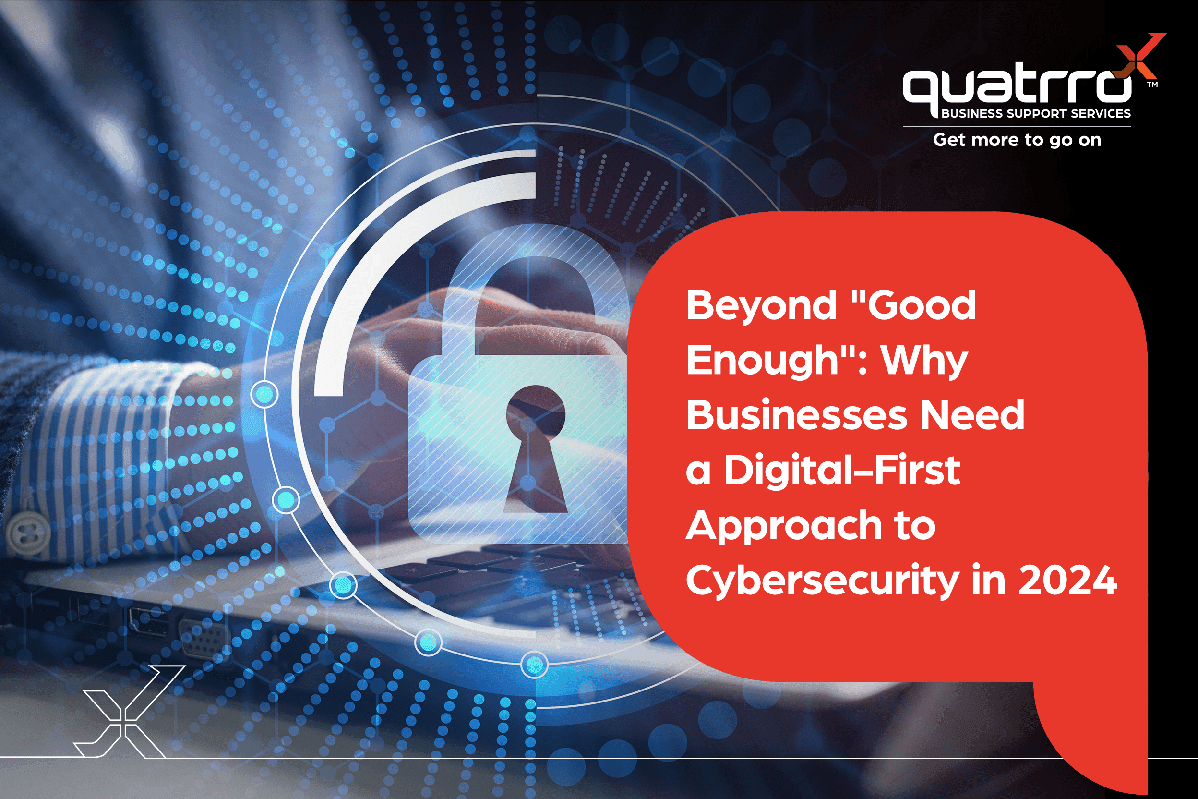Blog Details
Beyond "Good Enough": Why Businesses Need a Digital-First Approach to Cybersecurity in 2024
March 27, 2024

Upping the Game: Why Cybersecurity is a Critical Cog in Digitally Transforming an Organization
Cybersecurity continues to be a “push-and-pull” challenge for businesses . On the one hand, technologies equipped to enhance threat detection and automate security are rapidly evolving . This means analyzing huge datasets and spotting anomalies has never been simpler. On the other hand, the scale and volume of threats continues to grow each and every day. According to CFO.com, in 2023, 75% of security specialists reported observing an increase in cyberattack. More alarmingly, Statista reports that nearly 73% of all organizations worldwide were victims of a ransomware attack last year!
Clearly, cybersecurity is no longer a choice, but a necessity. But is your organization ready for what lies ahead?
An Inside-Out Perspective of the Digital Landscape
According to McKinsey, organizations have yet to strike a solid alignment between their digital objectives and their cybersecurity plan. So, while digital transformation is a priority, fundamental differences may exist between the implementation of that digital transformation and the cybersecurity plan the company currently has in place. Simply put, organizations are trying to connect more devices and leverage cutting-edge technologies, but the cybersecurity plan has likely not been re-visited to ensure all the technological updates implemented are accounted for in the security plan.
As a result, the goal should be to ensure all elements in the organization’s ecosystem act as digital enablers. To achieve this, the organization should follow this suggested three-pronged transformational approach:
Increased emphasis on risk management and the application of quantitative risk analytics.
Seamlessly building and integrating cybersecurity awareness directly into the organization’s value chains.
Promotion of next generation enterprise-technology platforms, including agile development, robotics, and cloud-based operating models.
Overall, every aspect of creating (and maintaining) a strong digital organizational infrastructure is closely linked to the strength of the cybersecurity plan design and execution. For example, McKinsey illustrates the (now) basic norm of crafting unforgettable digital experiences for customers. They mention that a critical part of this process is aligning teams to manage fraud prevention, security, and product development – all of which must be designed with secure and cutting-edge experiences in mind. Not uncommonly, though, organizations find that the data that they must collect and maintain in order to provide that desired digital experience, could open them up to greater cyber risk.
The goal then must be to “map” the vulnerable gaps in the organization which can be attacked to ensure those gaps are all being accounted for in the cybersecurity plan. But, how is it possible to know where all these gaps could exist?
Identifying the Areas of Risk
According to industry experts, threats to an organization can be mapped as follows; consider the organization’s digital assets and those should be outlined against the various types of attacks that can possibly occur. If “mapped” together, the space in between is the “attack surface” or the “gap” that should be addressed.
In “mapping” the potential attack surface, here are some of the typical technology threats an organization should consider that they may face so should account for in their gap analysis:
Technology Threats
Ransomware Attacks: Per SC Media, in 2023, the average cost of recovering from a ransomware attack was $1.82 million, excluding the ransom payment. In 2024, ransomware-as-a-service and double extortion attacks will continue to be a key security issue.
5G Networks: ISACA believes that the increased proliferation of 5G networks can pose a double threat. First, the attack surface is significantly expanded, owing to the increased number of connected devices and a higher volume of data transmission. Secondly, the network slicing and virtualization feature increases the vulnerabilities and points of possible exploitation.
Artificial Intelligence and Machine Learning: AI models are now being used by hackers to further their phishing and social engineering campaigns. By recreating human conversation, these agents may attempt to extract confidential information from users, your employees.
Cloud Security: Though cloud computing now forms the backbone of every enterprise, it is still fraught with risks. For this reason, organizations must implement strong identity and access management norms to control user access to their cloud. These measures may include multi-factor authentication, role-based access control, etc.
Phishing: According to Hornetsecurity, phishing continues to be the most common email attack method, pegged at 39.6% of all email threats. This is clearly an ongoing cybersecurity challenge, even in 2024!
Summary
Cybersecurity will remain a major concern in 2024 and beyond. Organizations must move beyond the "good enough" approach when it comes to network security to ensure the security of their growing digital infrastructure. The imperative here is clear: don’t slow down your digital transformation, but be sure to enable your cybersecurity function to keep up with digital evolution.
The cybersecurity stakes have never been higher and you need to know your organization is prepared. We would love to help you embrace the power of technology, and see your business soar, while also knowing that it is protected so an attack doesn’t cripple your growth plans. Don't wait to transform your business. Partner with us now and unlock your digital future.








